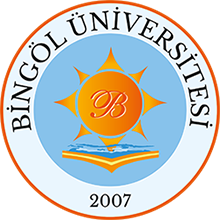Phytochemical analysis, antiproliferative and antioxidant activities of Chrozophora tinctoria: a natural dye plant
Date
2017Author
Oke-Altuntas, Feyza and Ipekcioglu, Selma and Yaglioglu, Ayse Sahin and
Behcet, Lutfi and Demirtas, Ibrahim
Metadata
Show full item recordAbstract
Context: Chrozophora tinctoria (L.) A. Juss. (Euphorbiaceae) is known as
`dyer's-croton' and used to obtain dye substances. Recently, natural
antioxidants and colorants have been of interest because of their safety
and therapeutic effects.
Objective: This study investigates the antiproliferative and antioxidant
activities of the various extracts and fractions from C. tinctoria and
analyzes their phytochemical contents.
Materials and methods: The aerial parts of C. tinctoria were extracted
with water, ethyl acetate, n-butanol, and methanol/chloroform. Phenolic
compounds and other constituents of the extracts were analyzed by
HPLC/TOF-MS. The ethyl acetate extract (EA) was fractionated by flash
chromatography. The extracts, fractions, and major phenolic compounds
were investigated for their antiproliferative activities on human
cervical adenocarcinoma (HeLa) cell line at the concentrations of 5-100
mu g/mL by using BrdU ELISA assay during 24 h of incubation. DPPH
radical scavenging activities (5-150 mu g/mL) and total phenolic
contents of the samples were also evaluated.
Results: 4-Hydroxybenzoic acid (268.20 mg/kg), apigenin-7-glucoside
(133.34 mg/kg), and gallic acid (68.92 mg/kg) were the major components
of EA. CT/E-F6 (IC50 = 64.59 +/- 0.01 mu g/mL) exhibited the highest
antiproliferative activity. CT/E-F2 (IC50 = 14.0 +/- 0.0 mu g/mL) and
some fractions displayed higher radical scavenging activity compared to
synthetic antioxidant BHT (IC50 = 23.1 +/- 0.0 mu g/mL). Among the main
phenolics, gallic acid exhibited the highest antiproliferative and
radical scavenging abilities (IC50< 5 mu g/mL).
Conclusion: In this study, we have determined the biologically active
fractions and their high effects may be attributed to the presence of
gallic acid.
Collections

DSpace@BİNGÖL by Bingöl University Institutional Repository is licensed under a Creative Commons Attribution-NonCommercial-NoDerivs 4.0 Unported License..













